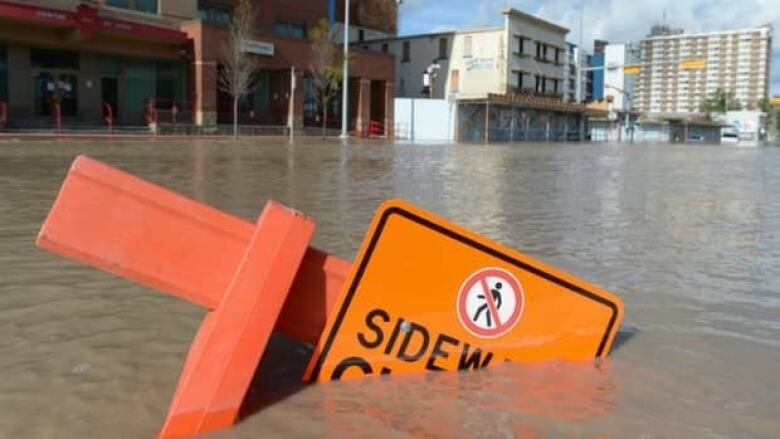13 high-risk disasters that could hit Calgary — and how to prepare
Calgary Emergency Management Agency's new website urges people to plan for the worst

Catastrophic flooding. A major hostage incident. A train that derails and spills hazardous goods downtown. An EF5-class tornado.
Those are just a few of the 13 highest risk disasters Calgary could face, out of 65 natural and man-made crises reviewed and ranked by the city's emergency management agency.
The agency has launched an interactive website outlining just how likely each disaster is, what the consequences could be to the city and how people can prepare for the worst.
"This is an absolutely foundational piece of work," said Sue Henry, deputy chief of the Calgary Emergency Management Agency.
"Because it's a shared responsibility, we need citizens to be ready to take care of themselves and their families, we need them to have a kit for 72 hours, so we can focus resources on those people that are truly in a life-threatening condition."
CEMA ranked all of the risks it reviewed by its likelihood, past trends and the consequences it could have.
The 13 disasters ranked as highest risk are:
- Catastrophic flooding of the Bow River.
- Catastrophic flooding of the Elbow River.
- Extreme cold.
- Major critical infrastructure failure or disruption.
- Major dam breach on the Bow River.
- Major drought.
- Major hostage incident.
- Mass casualty attack.
- Major rail incident.
- Blizzard.
- Heavy rainstorm.
- Winter storm.
- Tornado.
Many of these have precedents.
"Five of the 10 costliest disasters over Canadian history have occurred and directly impacted Calgary, and seven out of 10 if you consider the support that Calgary has provided to other municipalities in Alberta," Henry said.
The website — called the Calgary Disaster Risk Explorer — shows Calgarians maps of where tornadoes have hit before, hot spots where the most calls come in for overland flooding and which areas are along major rail corridors in the event of a derailment.

Henry said although some of the disasters might seem unlikely, that doesn't mean Calgarians shouldn't prepare.
"Sometimes when things have a high risk and the likelihood is low, the impact of that type of risk to the Calgary community can be very catastrophic," she said.
"So we need to have those risks still in our planning radar and still be prepared for them so in the unlikely event that they do happen, we're still ready to respond."

The site includes information on how to build a 72-hour emergency preparedness kit, sign up for emergency alerts, and make a plan that fits your unique circumstances (at your business, with your family, or as a senior or person with a disability.)
Henry said one concern that will hit harder in future disasters is that Calgary's population is aging.
"By the year 2030, it's expected that one in five Calgarians will be a senior and we know that seniors are especially vulnerable to disasters."
Despite experts largely agreeing that people should need to be self-sufficient for at least the first three days following a disaster, on average less than half of people have emergency kits that would get them through that length of time, according to a 2012 literature review on personal disaster preparedness. And, the numbers are lower for those in poverty.
Another issue is awareness of disaster risk.
A recent CEMA study showed only six per cent of Calgarians realize they live in a high-risk zone for tornadoes, Henry said.
"What this highlights to us is that we have some more work to do to make sure that citizens understand that is a risk that they may face," she said.
Henry said the agency will monitor the site and add new risks as deemed necessary.
If Calgarians want to check out the new site in person, it will be on display at Disaster Alley on May 4 between 11 a.m. and 3 p.m. The 10th annual event will be held at McMahon Stadium, and more than 40 agencies will be present to demonstrate how people can prepare for worst-case scenarios.
72-hour emergency kit checklist (PDF KB)
72-hour emergency kit checklist (Text KB)CBC is not responsible for 3rd party content